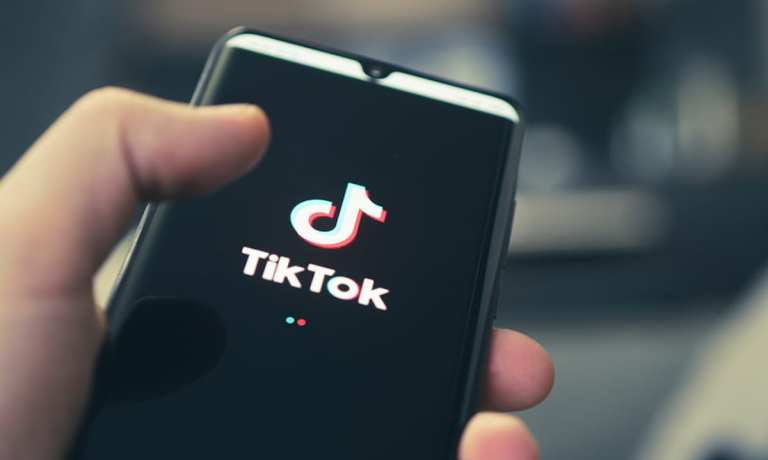While TikTok may not be on par (yet) with Instagram, Facebook, Pinterest, YouTube or Google in terms of ad revenue or share, when it comes to reaching and motivating young shoppers, it has burst onto the scene and become a powerhouse of persuasion in the social commerce segment, which has collectively still barely scratched the surface.
Simply put, products appearing in the streams of TikTok’s top creators or trending topics are pure gold, to the point where they have caused countless sellouts in everything from feta cheese to yoga pants, cosmetics and more.
It’s only fitting that the queen of the genre is a 16-year-old girl named Charli D’Amelio, whose 112 million followers have given her videos more than nine billion likes. For example, a video D’Amelio just posted last week of her putting on Morphe makeup has already been viewed 21 million times and liked 3.5 million times — and it was only seven seconds long. In another two-second-long clip, the young brunette said only “my merch is here,” while wearing pajamas with the Dunkin’ logo emblazoned on them. That post has been viewed 25 million times in less than 10 days and received more than 4.4 million likes.
Whether pajamas and teens are in keeping with the core demographic of the coffee and donut chain is a debate for another day, but what is clear is that brands of all shapes and sizes would be hard-pressed to say more with less at scale.
Sponsored Content vs. Creator Content
Advertisement: Scroll to Continue
All told, retailers are projected to spend more than $35 billion on digital advertising this year. That’s more than other big-spending sectors — including cars, financial services and even beer — and a measure of how high the social commerce stakes have gotten.
The result is that more brands and retailers — including the biggest of them all, Walmart — are aligning themselves and their products with TikTok’s existing stable of influencers. For example, the CMO of the 60-year-old king of the big-box stores said the company chose to connect with consumers on “the fastest-growing digital community” in a move that’s been both hip and lucrative.
“In December, we brought a shoppable livestream experience to U.S. TikTok users for the very first time,” Walmart CMO William White wrote in a recent blog post. “The TikTok community enjoyed shopping while engaging with their favorite creators,” he added, noting that the company netted seven times more views than anticipated and grew its base of TikTok followers by 25 percent. “With that kind of demand and positive response, we’re going to give TikTok users more of what they want.”
Other brands, like the U.K. cosmetics firm Revolution, use the social commerce platform to identify new faces and styles within the ranks of consumers who already like and use their brand, via a month-long social commerce campaign that includes a $100,000 prize and a new product line launch for one lucky winner. But it turns out, the company itself may be the real winner — its “#CreatorRevolution” initiative inspired several hundred highly diversified video submissions in just three days.
Tip of the Iceberg
Social commerce platform Verishop, which offers seamless group shopping trips through a curated platform of more than 1,000 brands, has combined the social aspect and the commerce piece and taken them to the next level, enabling things like in-app purchases. It’s a feature that vendors and consumers appreciate, and one that demonstrates ample room for growth.
“eCommerce is still only a small slice of U.S. consumer purchasing, with fewer than one in five transactions happening online,” Jessica Anerella, head of product design at Verishop, told PYMNTS. “There’s a lot of room for growth there, and at the same time, eCommerce [and] social media are going to continue to converge.”
With millennials and Gen-Z shoppers already finding inspiration for their lives online, Anerella said the next step is to build in seamless convenience. “Marrying eCommerce and social discovery in one app means our users can enjoy the social shopping experience while knowing we’re handling brand vetting, shipping and customer care for them,” she noted.
With two-thirds of Verishop’s base younger than 35 years old, Anerella’s colleague, Esther Min, who heads up fashion partnerships for Verishop, said the platform allows the company — and its retailers — to identify trends and buying shifts early and easily. “During the pandemic, we saw spend shift toward home and beauty in categories such as cookware and skincare,” Min said. “Since the start of 2021, we’ve seen our customer shift back to pre-pandemic behavior. They’re shopping for dresses, denim, non-sneaker shoes and outdoor apparel again. People are definitely buying clothes for the world to see.”
Other retailers, such as Nike, that are deeply committed to growing their direct-to-consumer sales are also progressing up the digital food chain to “eCommerce 3.0” — going from a simple website to D2C capabilities to super-slick, next-gen digital selling through social media. In the case of the footwear giant, which is fanatical about both protecting — and properly projecting — its “Swoosh” brand trademark, the idea of bringing social commerce in-house seems like a logical next step.
“Nike is looking to create its own social shopping niche outside the bounds of TikTok and Instagram,” Women’s Wear Daily reported last week, noting that the company has already set up a “Nothing But Gold” landing page tailored to female consumers.
Even “Vogue” magazine, which is synonymous with big-budget campaigns and designer photo shoots, has written more than six stories in the past three months referencing how TikTok has changed fashion and influenced its editors’ buying decisions — more so than the traditional model on a runway.
After a diversion last summer that almost saw the popular platform getting blocked or forced into a sale, life for TikTok has calmed down. The company has regained its focus and is ramping up its portfolio of tools to entice more retailers into trying something new. By most accounts, it will likely be an easy sell.




